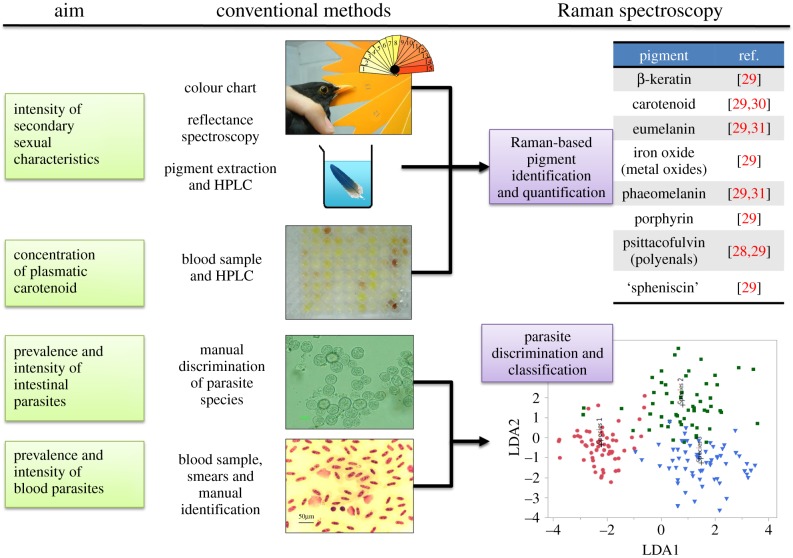Figure 3.
Example of the advantages of Raman spectroscopy in evaluating the effects of food availability and parasitism on the secondary sexual characteristics in birds. In black birds, carotenoid pigments are an indicator of good health as their concentration is directly correlated with food availability and the immuno-resistance against parasitism [32]. Raman spectroscopy is known to provide specific signatures for pigment identification and quantification, as shown in the pioneering work of Thomas et al. [29,30], Galvan & Jorge [31] and Fernandes et al. [28], thus giving an alternative to the destructive and time-consuming conventional methods currently used by ecologists. This may become useful to monitor indirectly the health status of birds in natural populations. Likewise, the discrimination of intestinal and blood parasite species (copepoda, protozoa, etc.) could be done by spectral measurements in a systematic manner without the need for smears and hazardous manual identification. We show here a hypothetical example of linear discriminant analysis (LDA), in which three groups are identified (each point of the plot corresponds to a spectrum taken from one individual).

